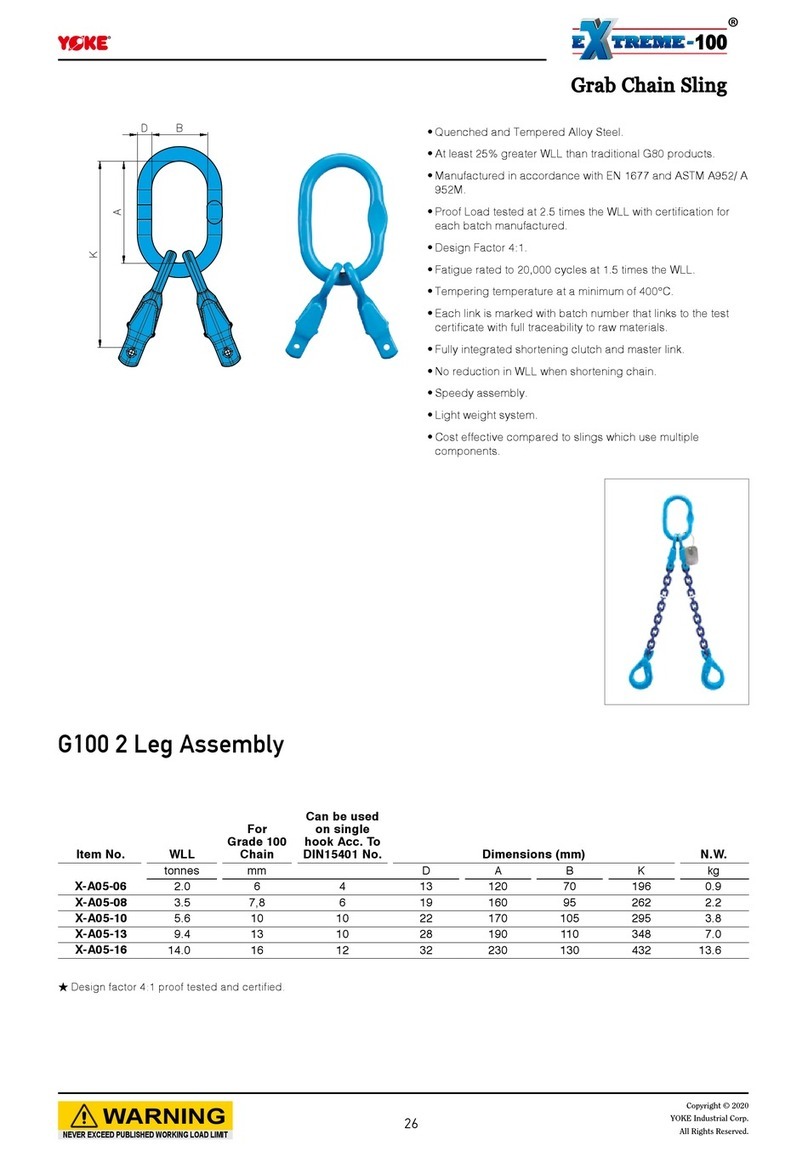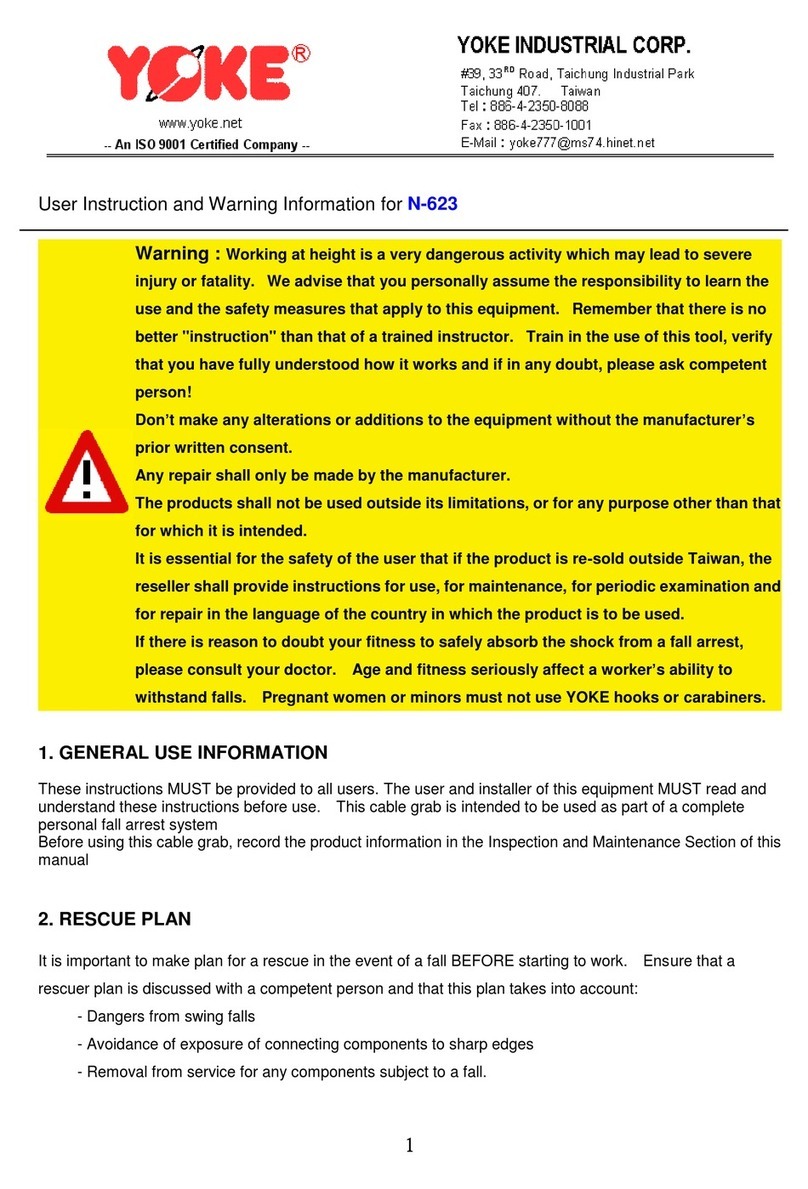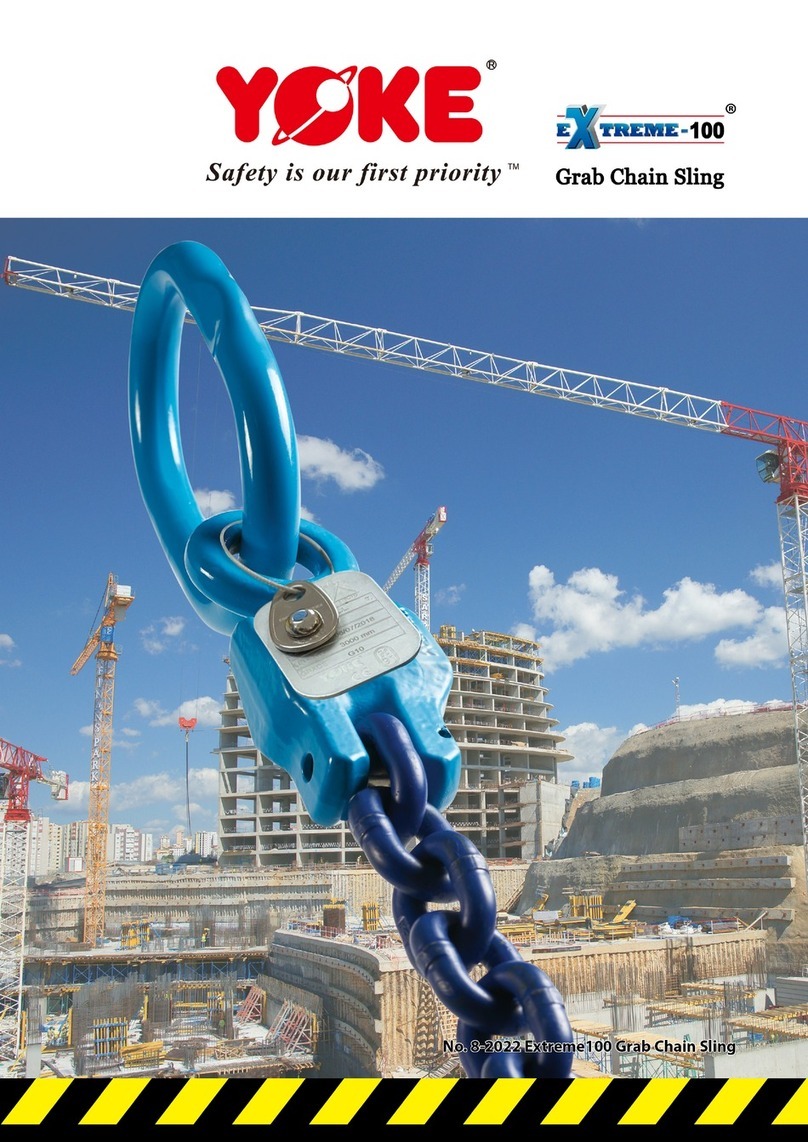
4
ANCHORAGE STRENGTH: Anchorages selected for use with the N610LY, N630LY rope grabs must have a strength capable of
sustaining the static load requirements of the intended fall protection application:
a FALL ARREST: Anchorages selected for fall arrest systems shall have a strength capable of sustaining static loads applied in
the directions permitted by the system of at least: 23kN (5,000 lbs) for non-certified anchorages.When more than one fall
arrest system is attached to an anchorage, the strengths shall be multiplied by the number of systems attached to the
anchorage.
B. 4 LIFELINE REQUIREMENTS: The N610LY and N630LY rope grabs are CSA Z259.2.5 approved when used with the following
synthetic lifelines:
16mm MCM Superline Rope (from MCM Ropes & Rigging)
57-316 16mm Rope (from Cancord)
B. 5 SIZE: The N610LY, N630LY are designed to be used only with the approved 5/8-inch (16mm) diameter lifelines specified
above. Lifelines not approved / undersized lifelines may NOT be used with N610LY, N630LY since the rope grab may not
lock properly and may lead to escessive excessive stopping distances OR inability of grab to arrest the fall. Oversized rope
may impede rope grab mobility on the lifeline.
B. 6 CONNECTING THE LANYARD: The N610LY, N630LY rope grabs can only be used with supplied integrally attached shock
absorbing lanyard. The rope grab, shock absorbing lanyard and lifelines have all been tested by CSA to meet or exceed
requirements of CSA Z259.2.5.
B. 7 BODY SUPPORT: The required body support is a full body harness. USE ONLY APPROVED FULL BODY HARENSS.
C.
SYSTEM REQUIREMENTS
C.1
BEFORE EACH USE OF THE N610LY, N630LY
carefully inspect to ensure that it is in good working condition (see section E) .
Do not use if inspection reveals an unsafe condition.
C.2 PLAN your fall arrest or restraint system before starting your work. Consider all factors that affect your safety before,
during, and after a
fall
. Refer to these and related subsystem component
instructions
, and state and federal safety
regulations for guidance in planning your system. Examples of items to be considered:
a ANCHORAGE: Select a rigid anchorage point that is capable of supporting the required loads. The anchorage location
must be carefully selected to reduce possible free fall and swing fall hazards and to avoid striking an object during a fall.
For fall arrest systems OSHA requires the anchorage be independent of the means suspending or supporting the user.
b FREE FALL: Do not work above the anchorage point. Personal fall arrest systems must be rigged such that the potential
free fall is never greater than 1.8 m (6 feet).
c FALL ARREST FORCES: The fall arrest system will limit the fall arrest forces to 4kN (900 lbs) with the supplied integrally
attached shock absorbing lanyard
d SWING FALLS: Swing falls occur when the anchorage point is not directly above the point where a fall occurs (Figure 5).
The force of striking an object while swinging can be great and cause serious injury.
e FALL CLEARANCE: Make certain enough clearance exists in your fall path to prevent striking an object (Figure 6). This
required clearance MUST be determined PRIOR TO EACH USE OF N610LY, N630LY.
f SHARP EDGES: DO not work where parts of the system will be in contact with, or abrade against, unprotected sharp
edges.
IMPORTANT: CSA Z259.2.5 mandates the lower end of the lifeline have a termination that prevents the fall arrester from passing through
that termination. When the line is installed, the bottom end shall also have a counterweight to provide stiffness. Knots shall not be used
for load bearing end terminations.
Warning: Do not alter or intentionally misuse this equipment. Do not use this equipment if you are unable to tolerate the impact from a
fall arrest. Age and fitness can seriously affect your ability to withstand a fall. Pregnant women and minors must not use this equipment.
OSHA 1926.500 AND 1910.66: Anchorages used for attachment of PFAS shall be independent of any anchorage being used to support or
suspend platforms, and capable of supporting at least 23kN (5,000 lbs) per user attached, or be designed, installed, and used as part of a
complete PFAS which maintains a safety factor of at least two, and is supervised by a qualified person.































